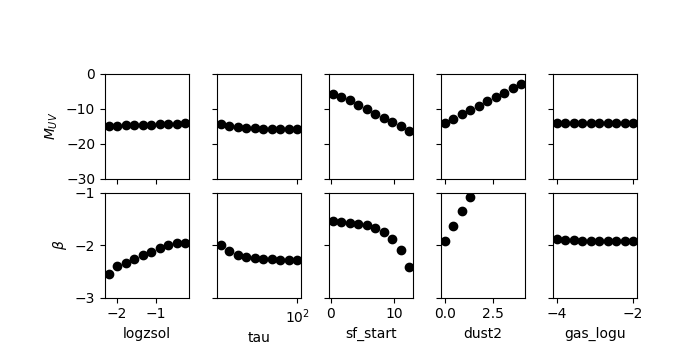Nicole Drakos
Research Blog
Welcome to my Research Blog.
This is mostly meant to document what I am working on for myself, and to communicate with my colleagues. It is likely filled with errors!
This project is maintained by ndrakos
FSPS Free Parameters
In the last post, I outlined some potential free parameters in generating spectra, and detailed how to calculate the resulting UV properties.
In this post, I will vary the free parameters to get a sense of how they affect the UV properties.
Baseline
As in the previous post , I will consider a galaxy of mass \(10^8 M_\odot\) at redshift zero. The age of the universe should be about 13.8 Gyr, which sets tage=13.8
For the potential free parameters, I assign them baseline values of logzsol=0, sf_start=10, tau = 1, dust2=0, gas_logu=-2.
Results
I have changed the free parameters within reasonable ranges around this baseline. Note that this is not very rigourous… there is no gaurentee the same results will hold in another region of parameter space (i.e. if I started at another baseline).

The UV properties don’t seem to be sensitive to gas_logu (the gas ionization parameter), so I think I’ll just set this to -2. (Or use linear fit in metallicity? See eq 18 in Williams et al. 2018).
I am surprised about how insensitive the results are to tau, which is the efolding time for star formation. Here, we have varied it from 0.1 to 100 Gyr, which is the range allowed in FSPS. These timescales are fairly long, so that is probably why… My default parameters have star formation beginning at 10 Gyr, leaving the total time for star formation to be less than 4 Gyr.